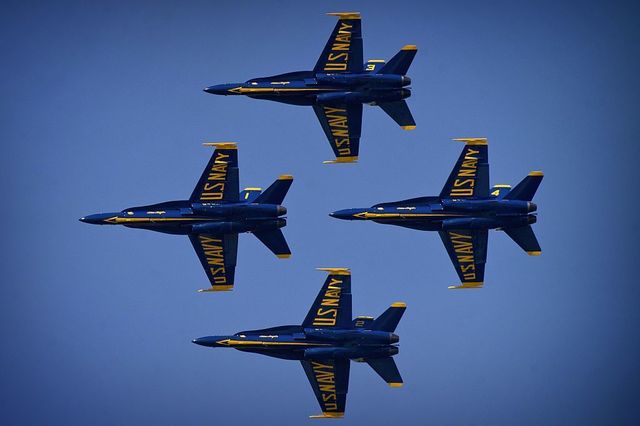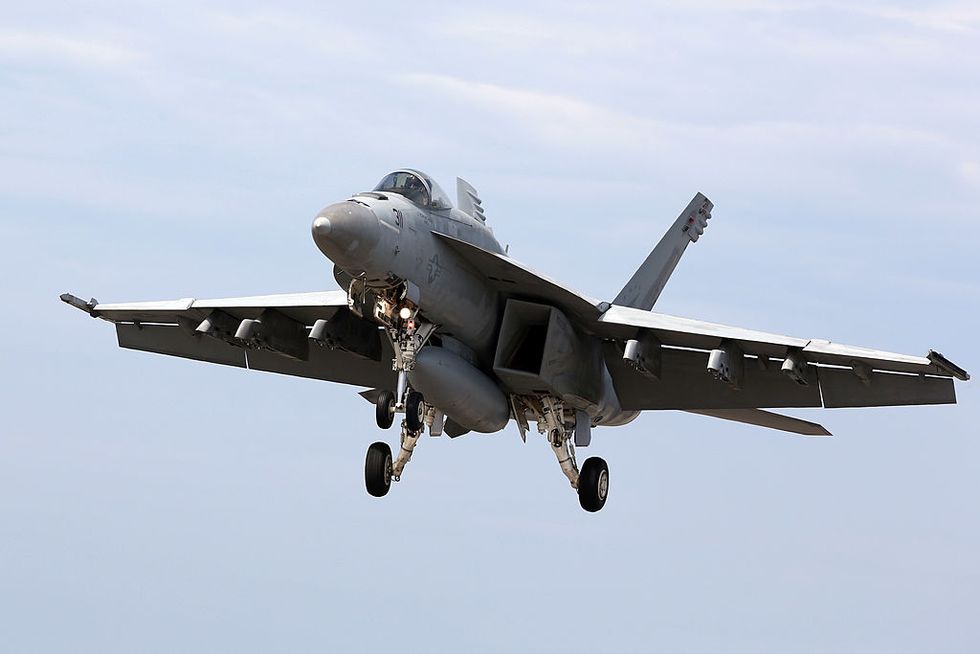Boeing scored a $12 million dollar contract to transition the U.S. Navy's Blue Angels flight demonstration squadron to newer jets. The Blue Angels, who have been flying the F/A-18 Hornet since 1986, are moving up to the bigger F/A-18E/F Super Hornet.
The Blue Angels currently fly a mixed bag of older Hornet fighters. They've got three of the oldest F/A-18A model, 10 of the newer -C models, and three two-seater models. The -A and -C models are all 20 to 30 years old. The Angels typically fly Hornets that are very much still functional, but too old to keep operating from aircraft carriers. The Blues' own website says their jets arrive from the fleet "at the end of their carrier arrest functionality."
According to AirShow News, the conversion to the Super Hornet should be complete by September 2017. It takes a bit because Jets bound for the Blue Angels have their 20-millimeter nose cannons removed and replaced with a smoke-fluid system for laying smoke trails during an air show. The planes also have a fuel pump inverted, a stop watch and adjustable constant-tension stick spring installed, and entire aircraft painted in the iconic blue and gold paint job.
The Blues have stated in the past they would rather stick with the older planes. The website used to state: "While the Super Hornet has more recent technology, the Hornet is more suitable to the needs of the current team due to its light weight and slick maneuverability." But older Hornets are getting tricky to maintain in the field. A combination of aging airframes that need more TLC, difficulty finding parts that are no longer manufactured, and budget cuts have left Navy and Marine Corps Hornet squadrons struggling. For example, as of April, only 87 of the Mariner Corps' fleet of 276 Hornets were in flyable condition.
In addition, the carrier version of the F-35 is nearly three years from entering active service. As a result, the Navy may feel it have no choice but to migrate to the newer planes.
While the Blue Angels may have preferred the Hornet over the Super Hornet, they'll adapt to the new platform. The team has flown jets with less power, like the A-4 Skyhawk, as well as planes that are bigger and less maneuverable, like the F-4 Phantom. Moving from an older to a newer Hornet is easier than moving to a totally new aircraft, and spare parts will be easier to source, too.
The team's September 2017 schedule is just a little bit light compared to other months, with June being another light month. Could October see an all-new fleet of planes gracing air shows nationwide?
Via AirShow News

Kyle Mizokami is a writer on defense and security issues and has been at Popular Mechanics since 2015. If it involves explosions or projectiles, he's generally in favor of it. Kyle’s articles have appeared at The Daily Beast, U.S. Naval Institute News, The Diplomat, Foreign Policy, Combat Aircraft Monthly, VICE News, and others. He lives in San Francisco.














